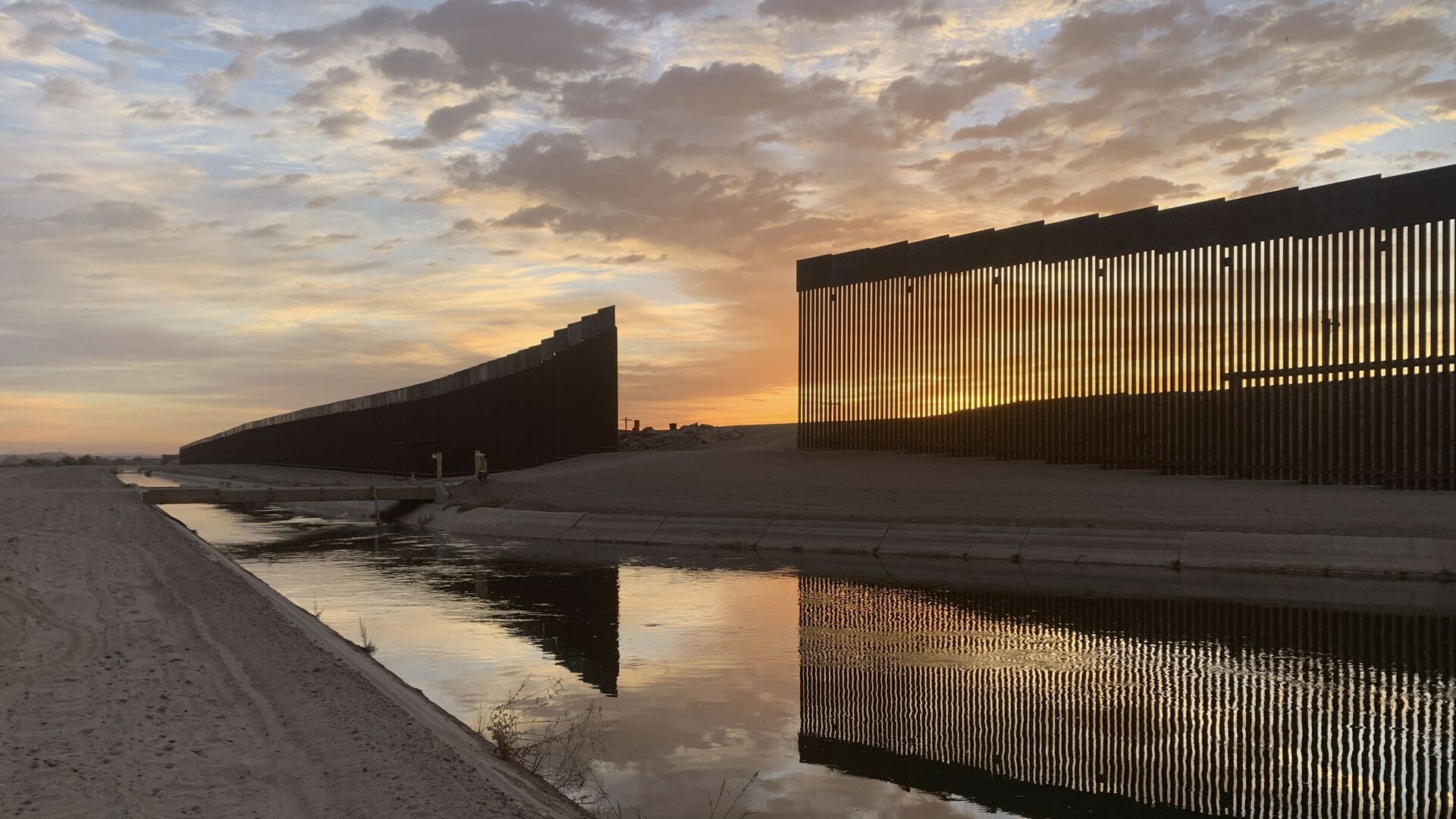https://sputnikglobe.com/20220128/cock-block-wall-trumps-border-wall-prevents-endangered-gray-wolf-from-finding-mate-1092558524.html
Cock Block Wall: Trump's Border Wall Prevents Endangered Gray Wolf From Finding Mate
Cock Block Wall: Trump's Border Wall Prevents Endangered Gray Wolf From Finding Mate
Sputnik International
Environmentalists believe that the wolf’s path, tracked by a GPS collar affixed by the US Fish and Wildlife Service, proves that the wall alters the movement... 28.01.2022, Sputnik International
2022-01-28T14:53+0000
2022-01-28T14:53+0000
2022-11-03T18:26+0000
us
wall
wolf
donald trump
https://cdn1.img.sputnikglobe.com/img/07e5/06/0c/1083131632_0:136:3157:1912_1920x0_80_0_0_1f3c5077cce9a2504cab4133d8908ba3.jpg
A story of a wolf walking hundreds of kilometres in search of a mate could be used by filmmakers for a romantic plot. National Geographic recently reported about a two-year-old endangered Mexican gray wolf, known as Mr. Goodbar, who left his pack in Arizona several months ago and set out on a journey to find a partner. He headed southeast through the Chihuahuan Desert before his path was blocked by a nine-metre-high wall, preventing him from moving further into Mexico. According to experts at the US Fish and Wildlife Service, who had tagged Mr. Goodbar with a GPS collar, the wolf spent almost five days migrating along the wall, apparently trying to bypass the obstacle and head south but he gave up and went back.The wolf's story shows that "the border wall is placing the recovery of an endangered species at risk," Myles Traphagen, a biologist with the Wildlands Network, said, quoted by National Geographic. According to John Linnell, a biologist at the Norwegian Institute for Nature Research, the situation should be taken seriously because the ability to migrate is "crucial" to the wolves' "long-term genetic viability."
Sputnik International
feedback@sputniknews.com
+74956456601
MIA „Rossiya Segodnya“
2022
News
en_EN
Sputnik International
feedback@sputniknews.com
+74956456601
MIA „Rossiya Segodnya“
Sputnik International
feedback@sputniknews.com
+74956456601
MIA „Rossiya Segodnya“
us, wall, wolf, donald trump
us, wall, wolf, donald trump
Cock Block Wall: Trump's Border Wall Prevents Endangered Gray Wolf From Finding Mate
14:53 GMT 28.01.2022 (Updated: 18:26 GMT 03.11.2022) Environmentalists believe that the wolf’s path, tracked by a GPS collar affixed by the US Fish and Wildlife Service, proves that the wall alters the movement of wildlife.
A story of a wolf walking hundreds of kilometres in search of a mate could be used by filmmakers for a romantic plot.
National Geographic recently reported about a two-year-old endangered Mexican gray wolf, known as Mr. Goodbar, who left his pack in Arizona several months ago and set out on a journey to find a partner.
He headed southeast through the Chihuahuan Desert before his path was blocked by a nine-metre-high wall, preventing him from moving further into Mexico. According to experts at the US Fish and Wildlife Service, who had tagged Mr. Goodbar with a GPS collar, the wolf spent almost five days migrating along the wall, apparently trying to bypass the obstacle and head south but he gave up and went back.
The wolf's story shows that "the border wall is placing the recovery of an endangered species at risk," Myles Traphagen, a biologist with the Wildlands Network, said, quoted by National Geographic. According to John Linnell, a biologist at the Norwegian Institute for Nature Research, the situation should be taken seriously because the ability to migrate is "crucial" to the wolves' "long-term genetic viability."

